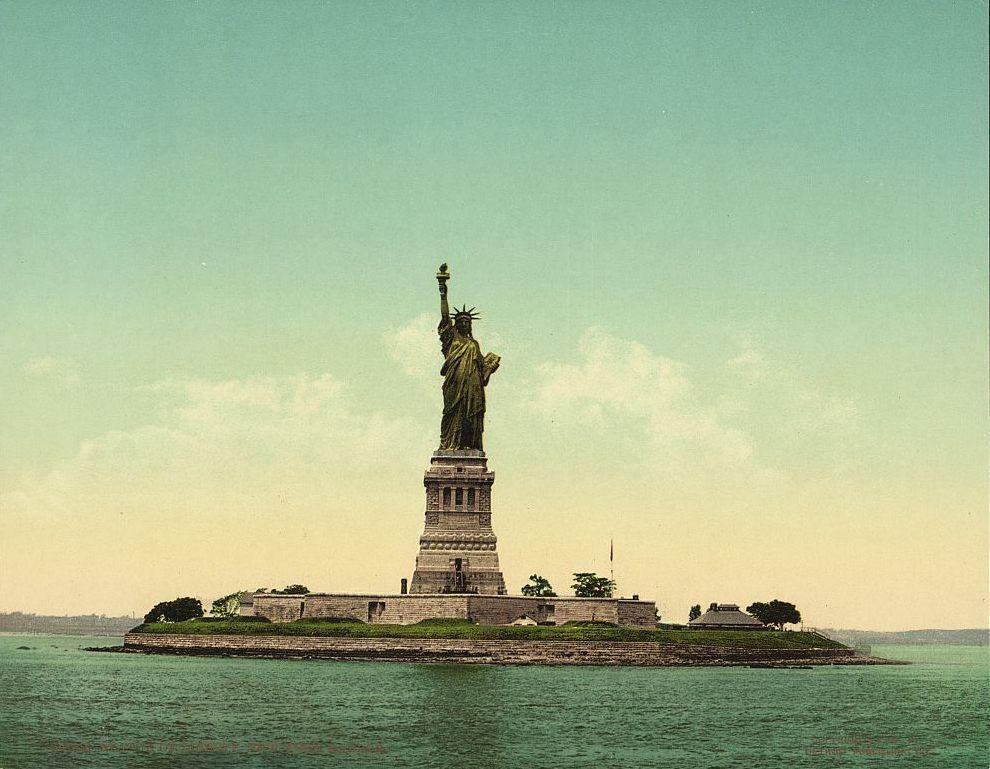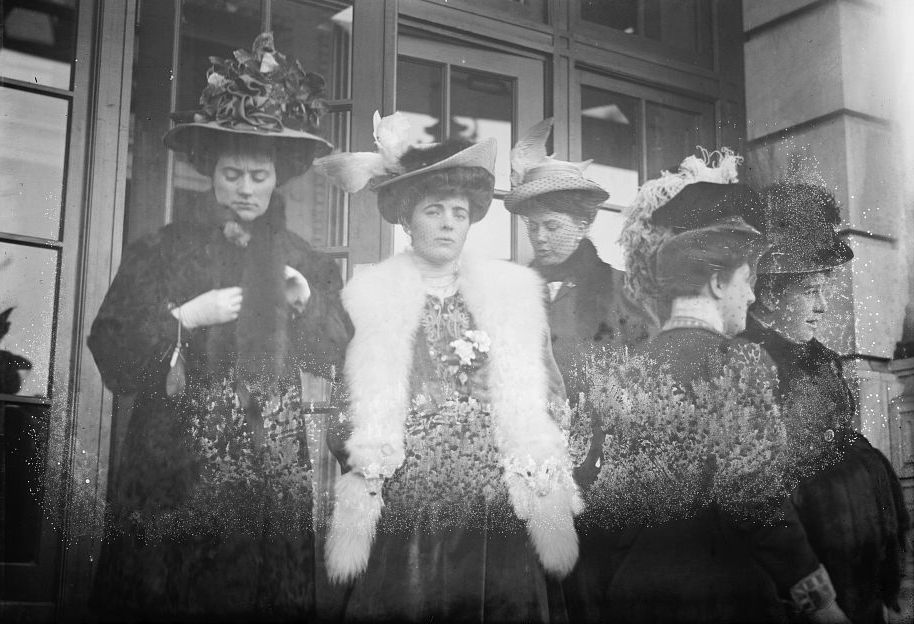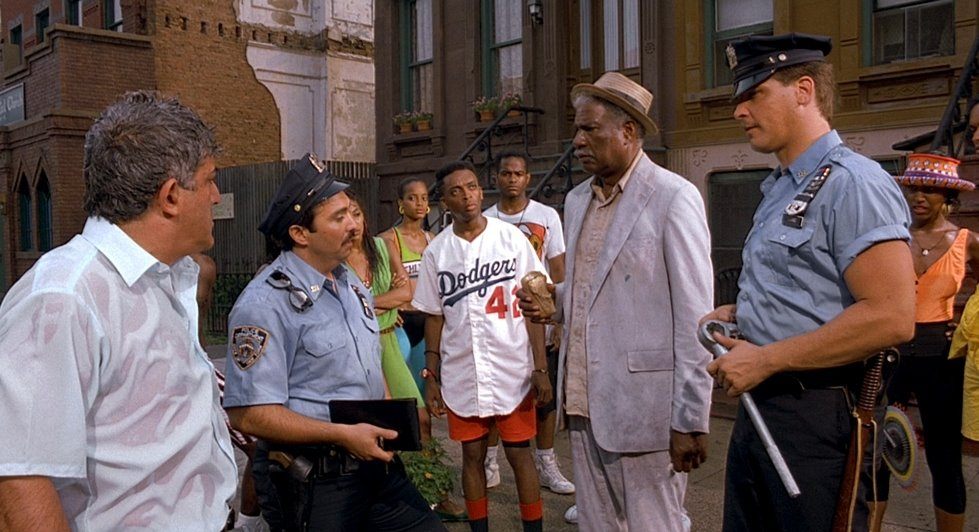Why There’s No Such Thing As A Brooklyn Accent
The New York accent (also found in New Jersey) is one of the most linguistically strange speech patterns in the country.

Bernie Sanders, New Yorker with the accent to match. (Photo: Michael Vadon/CC BY-SA 2.0)
For the first time in many years—possibly for the first time ever—when an American turns on the TV, he or she is very likely to hear a New York accent from a presidential candidate.
Whether it’s Donald Trump railing against this country’s “yuge problems” or Bernie Sanders discussing the differences between our political system and that of the nation of “Denmahk,” the New York accent is, suddenly, a thing.
Much has been made of the differences between the accents of the three New Yorkers in the race: there’s Bernie Sanders’s rough and thick Brooklyn accent, Donald Trump’s elitist Queens/Manhattan brogue, and Hillary Clinton’s featureless newcomer affect. “In Sanders, there is the early, slightly prudish Greenwich Village of Max Eastman and Joe Gould, of very intense arguments had very early in the morning,” writes Benjamin Wallace-Wells at New York magazine. “In Trump, there is the jaded cruelty of Bo Dietl and Don Imus and dreadful preppy bars on upper Second Avenue.”
Within New York, people love discussing the differences between a garish New Jersey accent and a honking “Lawn Guyland” (read: Long Island) accent. New Yorkers often claim they can pick out a Jersey City or a Brooklyn accent with ease, and, as with that Wallace-Wells quote, that we can read into a person based on the way they speak. One popular YouTube video breaks down the taxonomy futher: the Bronx accent is punchier and harder, the Queens accent more nasal, the Brooklyn accent more sing-song, the Manhattan accent faster and nervier, and the Staten Island accent more obnoxious.
According to linguists who study the New York City accent, this is completely wrong.
Kara Becker is the only linguist I spoke to for this story who didn’t sport an identifiable New York accent. She’s from northern New Jersey, and now is a linguistics professor at Reed College, in Oregon. But she may become the first person to systematically test that frequent assumption that New Yorkers have different accents based on where they’re from within the area. Her experiment, a website which is nearly ready to launch, supplies audio of various New Yorkers reading a set passage, and asks visitors to the site to guess which of the five boroughs the visitor thinks the speaker is from. “I would love to find out that there are things that distinguish a Queens accent from a Brooklyn accent!” says Becker.
But she, along with the other linguists I interviewed, is extremely doubtful that she’ll discover any such difference.

Linguists believe that there are minimal differences between the accents in the different New York boroughs. (Photo: Library of Congress/LC-DIG-ppmsca-18288)
New York City English is a remarkable dialect in about a dozen different ways. “If we look around the world for the national standard dialect, most people believe that the national standard is the clearest variety,” says Michael Newman, a linguist at Queens College and the author of New York City English. “But that’s not the case; it’s based on the most prestigious speakers. In France, upper-class Parisian is the norm. In England, it’s upper-class London and the northern areas.”
Given that, the standard American dialect should be New York; newscasters in Ohio should be trying to sound like Bernie Sanders. But of course they aren’t. Standard American English dialect is “vaguely Midwestern-sounding,” says Newman. It wasn’t always this way. The old New York accent, sported by FDR, among others, was well on its way to becoming the national standard. This accent, now basically extinct, has hardly anything in common with the modern New York accent. The old accent is often referenced by one strange transition: the “er” sound became “oy,” so New Yorkers could talk about the corner of Thoity-Thoid Street and Thoid Avenue.

Berenice Abbott’s photograph of Union Square, 1935. (Photo: New York Public Library/Public Domain)
Starting around the turn of the 20th century, waves of immigrants starting pouring into New York. “There were so many Italians, Jews, Irish, eastern Europeans, who were not thought of as white, or white enough,” says Newman. “Our ancestors weren’t really white, and you have to be white to be American.” The standard American accent couldn’t possibly be the one spoken by all these non-English, non-German folks. So the New York accent lost any chance of becoming the national standard.
The New York accent developed from there, though none of the linguists I spoke to were willing to tie any individual characteristic to any of those immigrant groups. Regardless, they were quite confident that there is one New York accent, a grab-bag of individual quirks that some people use more of and some use less of, but that is not at all correlated with geography.
In other words, how you speak in New York is unrelated to where you’re from, but it’s highly correlated with whom you are. Different socioeconomic and ethnic groups will exhibit some of those accent quirks, and some will use others, but it’s all from the same bag. There’s no Brooklyn accent. It’s just a New York accent, and the mere fact that someone’s from Brooklyn is extremely unlikely to indicate anything about the way that person speaks.
So: let’s talk about the modern New York accent. Here are the main features.
“There’s one vowel that very characteristically identifies you as a greater metropolitan area speaker, and that’s the “aw” sound,” says Lori Repetti, a linguist at Stony Brook University who’s originally from the Bronx (and sounds like it). This is most easily recognized in the word “coffee,” where most Americans will pronounce the first vowel as “ah.” New Yorkers will say “aw.” “The New York English is somewhat diphthongal, there’s a little gliding to is,” she says.
A diphthong is a vowel sound that’s made up of multiple simpler vowel sounds. What Repetti means is that the New York “cawwfee” vowel is more complex than a normal “ah,” using some combination of “ah,” “oh,” and coasting to a finish that’s something like “uh.”

Franklin Delano Roosevelt is said to have had the “old New York accent”. (Photo: Library of Congress/LC-DIG-hec-47161)
Another major feature is the elimination of the final “r” in many words, a feature sometimes called “r-dropping” or sometimes “non-rhoticity.” Think of Rockefeller Center, or as some New Yorkers would say, Rockefellah Centah. This is not that unusual; Bostonians do a version of this, as do some folks in the southeast—Charleston, for example. An oft-floated theory is that r-dropping came about in certain port cities in the 19th and early 20th centuries because Londoners drop their final “r” sounds. After World War II, when England was less enviable, Americans mostly began using their final “r” again—except in a few of those port cities, which, linguistically, have always been a little bit conservative and British-y.
Then there’s the “th” sound, which has two forms (“the,” which is kind of hard, and “thought, which is soft) and are both called interdental fricatives. “Interdental” means your tongue is placed between your teeth—go on, try it—and a fricative is a sound that you can continue to make as long as you have air in your lungs, like an “f” or an “s.” Like, pretend you’re a snake and say “ssssssss” for awhile.
New Yorkers, sometimes, turn these interdental fricatives into a stop: they replace the “th” sound with a consonant sound that can only be made by stopping the flow of air, like a “d” or a “t” sound. Unlike an “s,” you can’t make a “d” sound forever; the sound comes from you ceasing airflow. So New Yorkers will turn “the” into “duh,” and “thought” into “taught.”

South Street Seaport, c. 1901. (Photo: Library of Congress/ LC-USZC4-2655)
Perhaps Donald Trump’s most identifiable New Yorkese feature is one that’s basically unknown in the entire English-speaking world, except for New York: the changing of the “h” sound in “huge” or “human” to a “y.” Nobody has any idea why New Yorkers do this, but linguists are happy to explain how: the New York version is basically what you’d do if you were physically unable to make the “h” sound. It’s an approximation of the “h” sound that doesn’t require you to create an obstacle in your mouth with your tongue that air has to fight through in order to make that sound—a weird, lazy technique.
Where this gets really interesting is when we talk about who speaks in what way. The New York City dialect is very strong and pervasive but in an extremely small geographic area; basically, we’re talking about the five boroughs, the western half of Long Island, and a tiny pocket of northern New Jersey (primarily cities like Newark, Jersey City, and Hoboken). Unlike other dialects, like the Boston dialect, the New York City dialect doesn’t diffuse slowly throughout a large area surrounding the core. It stops very suddenly right around the Meadowlands, a gross part of New Jersey just a few miles outside New York City. Despite how many people live in New York, the actual geography of people who speak like New Yorkers is very small.

Well-dressed New York women. A 1962 survey found that New York accents diminish with wealth. (Photo: Library of Congress/LC-DIG-ggbain-00167)
Within the relatively small community of people with New York accents, variance is determined, linguists are pretty sure, by your community. Black New Yorkers demonstrate a few of the New York accent quirks (the r-dropping, especially) but not others. (Black linguistics is usually very separate from white linguistics; the fact that black New Yorkers even have that much in common linguistically with white New Yorkers is remarkable.) In that video, the one where Brooklynites are described as sounding “sing-song” and those from the Bronx sound “tough”? Those are perceptions based on stereotypes of those boroughs, not any kind of linguistic data—and in fact the little data that’s available doesn’t suggest those perceptions are accurate.
You can, generally, predict the way New Yorkers talk by how rich they are. A seminal 1962 study by William Labov surveyed New Yorkers in three stores: Klein’s (a now-defunct, bargain-style department store), Macy’s (then as now middle-class), and Sak’s (then as now for the rich). He found that, basically, the wealthier you are, the less pronounced of a New York accent you have.
This isn’t true elsewhere in the country. The Kennedy family in Boston, for example, or the Bush family in Texas both have or strain to have accents from their hometowns. In New York, there’s a serious stigma around some of these accent quirks, and anyone who says “I taught I found da answah” is perceived, even in New York, as undesirable to elites.

New Yorkers, from Spike Lee’s Do the Right Thing, all with different accents. (Photo: Courtesy Universal Pictures)
This election cycle has marked a major change in that perception. Trump and Sanders, though their accents are different, are both audibly New Yorkers. Sanders’s accent boasts more and more intense versions of the hallmarks of the New York City dialect due to his upbringing as lower-middle class; Trump’s upper-class upbringing in Queens and Manhattan gifted him a more modulated collection of accent quirks. But both are using their accents to indicate, far from claims of elitist, swaggering New York moguls, that these are approachable, relatable, and trustworthy men. Newman tells me that the New York accent is associated strongly with honesty and bluntness, with telling it like it is—a quality Americans are dying for in their politicians right now.
Either Trump or Sanders might be the last chance we have to get an audibly distinguishable New Yorker in the White House. The massive influx of outsiders into the city, along with the changing demographics of old New York neighborhoods thanks to gentrification, are putting, as Becker says, the accent into a recession. But it won’t die; it’ll just change to something else, as it always has. It might be that the last place to hear an authentic old New York accent will be in New Jersey.











Follow us on Twitter to get the latest on the world's hidden wonders.
Like us on Facebook to get the latest on the world's hidden wonders.
Follow us on Twitter Like us on Facebook